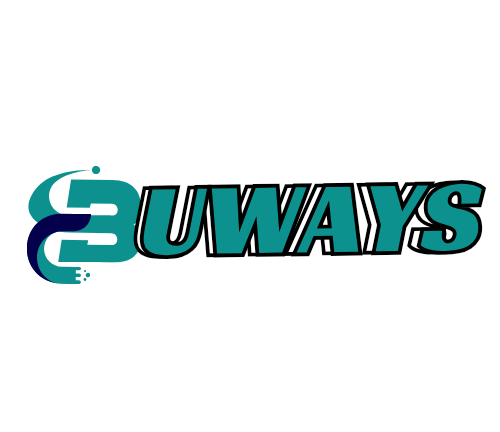In an era where financial decisions can make or break our future, navigating the borrowing landscape in 2025 requires a smart approach. As we embrace new technologies and economic shifts, the risks of falling into a debt trap loom larger than ever. Whether you’re considering personal loans, credit cards, or mortgages, understanding the nuances of borrowing is crucial to safeguarding your financial well-being. This guide will equip you with essential tips and strategies to borrow wisely, ensuring that you make informed choices that align with your long-term goals. Get ready to unlock the secrets to sustainable borrowing and take charge of your financial destiny, minimizing risks while maximizing opportunities. Say goodbye to the anxiety of overwhelming debt and hello to a more secure and confident financial future!
Understanding Debt: What You Need to Know
Debt is a double-edged sword: it can be a powerful tool for achieving financial goals or a burdensome weight that drags you down. Understanding the nature of debt is the first step in mastering it. Debt occurs when you borrow money with an agreement to repay it over time, typically with interest. The terms of this repayment are critical, as they determine the cost of borrowing and the impact on your financial health. Different types of debt serve various purposes, from funding education and home purchases to covering emergency expenses and daily living costs.
In 2025, the landscape of borrowing is more complex and nuanced than ever before. With the emergence of fintech companies and new forms of digital lending, consumers have more options but also face increased risks. It’s essential to distinguish between good debt and bad debt. Good debt, such as a mortgage or student loan, can help you build wealth or improve your earning potential. Bad debt, like high-interest credit card debt, can quickly spiral out of control and lead to financial distress. Recognizing this distinction can help you make informed decisions about when and how to borrow.
Moreover, understanding the terms and conditions of any loan agreement is crucial. Pay close attention to interest rates, repayment schedules, fees, and penalties. An informed borrower is less likely to fall prey to predatory lending practices or hidden charges. As you navigate the borrowing landscape in 2025, arm yourself with knowledge and stay vigilant about the terms of your financial commitments. This awareness will be your first line of defense against falling into a debt trap.
The Importance of Smart Borrowing
Smart borrowing is not just about getting the money you need; it’s about doing so in a way that supports your financial goals and minimizes risks. Borrowing without a plan can lead to unmanageable debt and financial instability. Smart borrowing involves careful planning, understanding the implications of your choices, and selecting the right type of loan for your specific needs. It’s about making borrowing decisions that align with your long-term financial strategy and not just your immediate desires.
One of the key principles of smart borrowing is to borrow only what you need and can reasonably afford to repay. This requires a thorough understanding of your financial situation, including your income, expenses, and existing debt obligations. Before taking on new debt, consider how it will affect your monthly budget and long-term financial goals. Avoid the temptation to borrow more than necessary, as this can lead to higher interest payments and increased financial strain.
Another critical aspect of smart borrowing is timing. Understand the economic environment and how it affects interest rates and lending terms. For instance, borrowing when interest rates are low can save you money in the long run. Additionally, consider the purpose of the loan and whether it will contribute to your financial health. Loans that fund investments in your future, such as education or home ownership, are generally more beneficial than those that finance short-term consumption. By approaching borrowing with a strategic mindset, you can make choices that enhance your financial well-being and avoid the pitfalls of excessive debt.
Types of Loans: Pros and Cons
When it comes to borrowing, there are various types of loans available, each with its own set of advantages and disadvantages. Understanding these can help you choose the right loan for your needs and avoid potential pitfalls. Common types of loans include personal loans, mortgages, auto loans, student loans, and credit card debt. Each type has unique features that can either benefit or burden you, depending on your financial situation and borrowing purpose.
Personal loans are versatile and can be used for a variety of purposes, from consolidating debt to funding major purchases. They generally have fixed interest rates and repayment terms, which can make budgeting easier. However, personal loans can come with high interest rates, especially if your credit score is not strong. It’s important to shop around and compare offers to find the best terms.
Mortgages are loans specifically designed for purchasing real estate. They typically have lower interest rates compared to other types of loans because they are secured by the property. Mortgages can come with fixed or variable interest rates and terms ranging from 15 to 30 years. While they offer the benefit of homeownership and potential appreciation in property value, they also involve significant long-term commitments and the risk of foreclosure if you fail to make payments.
Credit cards offer a convenient way to borrow and make purchases, often with rewards programs that provide cash back or points. However, they usually come with high interest rates and can lead to debt accumulation if not managed carefully. Credit card debt can quickly become overwhelming due to compound interest, making it crucial to pay off balances in full each month to avoid interest charges. By understanding the pros and cons of each loan type, you can make informed decisions that align with your financial goals and avoid unnecessary debt.
Key Factors to Consider Before Borrowing
Before taking out a loan, it’s important to evaluate several key factors to ensure that borrowing aligns with your financial goals and capabilities. One of the most critical factors is the interest rate. The interest rate determines how much you will pay in addition to the principal amount borrowed. Lower interest rates reduce the overall cost of borrowing, making it essential to shop around and compare rates from different lenders. Additionally, consider whether the interest rate is fixed or variable, as variable rates can fluctuate and impact your future payments.
Another important consideration is the loan term, or the length of time you have to repay the loan. Shorter loan terms generally mean higher monthly payments but lower overall interest costs. Conversely, longer loan terms can lower your monthly payments but increase the total amount of interest paid over the life of the loan. Assess your budget and financial stability to determine which loan term is most suitable for your situation. Ensure that the monthly payments fit comfortably within your budget to avoid financial strain.
It’s also crucial to review any fees and penalties associated with the loan. Lenders may charge origination fees, late payment fees, and prepayment penalties. These additional costs can significantly impact the affordability of the loan. Carefully read the loan agreement and ask the lender to explain any fees or penalties that you don’t understand. By thoroughly evaluating these factors, you can make an informed borrowing decision that supports your financial health and minimizes the risk of falling into a debt trap.
How to Assess Your Financial Situation
Before taking on new debt, it’s essential to conduct a thorough assessment of your financial situation. This involves evaluating your income, expenses, assets, and liabilities to determine your ability to manage additional debt. Start by creating a detailed budget that outlines your monthly income and expenses. This will give you a clear picture of your cash flow and help you identify areas where you can cut back or save more.
Next, calculate your debt-to-income ratio (DTI), which is the percentage of your monthly income that goes toward debt payments. A lower DTI indicates a healthier financial situation and a greater ability to take on new debt. Lenders often use DTI to assess your creditworthiness, so it’s important to keep this ratio within an acceptable range. Aim for a DTI of 36% or lower to ensure that you can comfortably manage your debt obligations.
Assess your savings and emergency fund. Having a robust savings buffer can provide a safety net in case of unexpected expenses or changes in your financial situation. This can prevent you from relying on high-interest credit cards or loans during emergencies. Additionally, review your credit report and credit score to ensure there are no errors or issues that could affect your ability to secure favorable loan terms. By thoroughly assessing your financial situation, you can make informed borrowing decisions and avoid taking on debt that you cannot manage.
Strategies for Responsible Borrowing
Responsible borrowing involves making thoughtful and informed decisions to ensure that debt enhances rather than hinders your financial well-being. One effective strategy is to set clear borrowing goals. Determine the specific purpose of the loan and how it fits into your overall financial plan. Whether it’s for education, a home purchase, or consolidating debt, having a clear goal will help you stay focused and avoid unnecessary borrowing.
Another key strategy is to create a repayment plan before taking on new debt. Outline how you will repay the loan, including the monthly payments and the timeline for repayment. Make sure that the repayment plan fits within your budget and does not strain your finances. Automating your loan payments can also help ensure that you never miss a payment, which can protect your credit score and prevent late fees.
Additionally, consider seeking professional advice from a financial advisor or credit counselor. These experts can provide personalized guidance based on your financial situation and help you develop a borrowing strategy that aligns with your goals. They can also assist you in navigating complex loan terms and identifying the most cost-effective borrowing options. By implementing these strategies, you can borrow responsibly and avoid the pitfalls of excessive debt.
Common Borrowing Mistakes to Avoid
Borrowing money can be a useful tool when managed properly, but it’s easy to make mistakes that lead to financial difficulties. One common mistake is borrowing more than you need. It’s tempting to take advantage of a higher loan amount, but this can result in larger monthly payments and higher interest costs. Borrow only what is necessary to achieve your financial goals and avoid the temptation to overborrow.
Another frequent mistake is failing to read and understand the loan terms. Many borrowers focus solely on the interest rate and overlook other critical aspects of the loan agreement, such as fees, penalties, and repayment terms. Take the time to carefully review the loan documents and ask the lender to explain any terms you don’t understand. This will help you avoid unexpected costs and ensure that you are fully aware of your obligations.
Lastly, relying too heavily on credit cards can lead to significant financial problems. Credit cards often have high interest rates, and carrying a balance from month to month can result in substantial interest charges. Avoid using credit cards for everyday expenses if you cannot pay off the balance in full each month. Instead, use them strategically for specific purposes, such as building credit or earning rewards, and always aim to pay off the balance to avoid accruing interest. By avoiding these common borrowing mistakes, you can maintain control over your finances and prevent debt from becoming a burden.
The Role of Credit Scores in Borrowing
Your credit score plays a crucial role in the borrowing process, as it is a key factor that lenders consider when evaluating your creditworthiness. A higher credit score can lead to more favorable loan terms, such as lower interest rates and higher loan amounts. Conversely, a lower credit score can result in higher interest rates and more stringent borrowing conditions. Understanding how your credit score affects your borrowing options is essential for making informed financial decisions.
Several factors influence your credit score, including your payment history, credit utilization, length of credit history, types of credit used, and recent credit inquiries. Payment history is the most significant factor, so it’s important to make all your payments on time. Late or missed payments can have a substantial negative impact on your credit score. Credit utilization, or the amount of credit you’re using compared to your total available credit, also plays a significant role. Aim to keep your credit utilization below 30% to maintain a healthy credit score.
Building and maintaining a strong credit score requires consistent and responsible credit management. Regularly check your credit report for errors and dispute any inaccuracies. Consider using credit monitoring services to stay informed about changes to your credit score. If you have a lower credit score, focus on improving it before applying for new loans. This may involve paying down existing debt, making all payments on time, and avoiding new credit inquiries. By understanding the role of credit scores in borrowing and taking steps to improve your credit, you can enhance your borrowing options and secure more favorable loan terms.
Alternatives to Traditional Borrowing
While traditional loans and credit cards are common borrowing options, there are alternative methods that may better suit your financial needs and goals. One alternative is peer-to-peer (P2P) lending, which allows you to borrow money directly from individual investors through online platforms. P2P lending can offer competitive interest rates and flexible terms, especially if you have a strong credit profile. However, it’s important to research the platform and understand the risks involved, as P2P lending is not regulated in the same way as traditional banks.
Another option is borrowing from family or friends. This can be a more flexible and cost-effective way to obtain funds, often with little to no interest. However, borrowing from loved ones can strain relationships if not managed properly. Be sure to create a formal agreement outlining the loan terms, repayment schedule, and any interest or fees. Clear communication and adherence to the agreement are essential to maintaining trust and avoiding conflicts.
Additionally, consider using a home equity loan or line of credit if you own a home. These options allow you to borrow against the equity in your property, often at lower interest rates than unsecured loans. However, they come with the risk of losing your home if you fail to make payments. Carefully evaluate your ability to repay before using home equity as collateral. By exploring these alternatives to traditional borrowing, you can find solutions that align with your financial situation and goals while potentially saving money on interest and fees.
Conclusion: Building a Sustainable Financial Future
Building a sustainable financial future requires a strategic approach to borrowing and a commitment to responsible financial management. By understanding the nature of debt and the various borrowing options available, you can make informed decisions that support your long-term goals. Smart borrowing involves setting clear objectives, evaluating your financial situation, and choosing loans that align with your needs and capabilities.
Avoiding common borrowing mistakes and maintaining a healthy credit score are essential components of responsible borrowing. Stay informed about your credit profile, make payments on time, and keep your credit utilization low to enhance your borrowing options. Additionally, explore alternative borrowing methods that may offer more favorable terms and lower costs.
Ultimately, the key to a secure financial future is balance. Use debt strategically to achieve your goals, but avoid overextending yourself. Maintain a robust savings buffer and emergency fund to protect against unexpected expenses. By adopting these principles and strategies, you can navigate the borrowing landscape in 2025 with confidence, minimizing risks and maximizing opportunities. Embrace smart borrowing practices to take control of your financial destiny and build a future that is both secure and prosperous.





